I have a dataset of spatial locations data. I want to do a point pattern analysis using the spatstat package in R using this data. I want the best polygon area for the analysis instead of the rectangle area. The code I have is
original_data = read.csv("/home/hudamoh/PhD_Project_Moh_Huda/Dataset_files/my_coordinates.csv")
plot(original_data$row, original_data$col)
which results in a plot that looks like this

Setting the data for point pattern data
point_pattern_data = ppp(original_data$row, original_data$col, c(0, 77), c(0, 116))
plot(point_pattern_data)
summary(point_pattern_data)
resulting in a plot that looks like this

#The observed data has considerably wide white spaces, which I want to remove for a better analysis area. Therefore, I want to make the point pattern a polygon instead of a rectangle. The vertices for the polygon are the pairs of (x,y) below to avoid white space as much as possible.
x = c(3,1,1,0.5,0.5,1,2,2.5,5.5, 16,21,28,26,72,74,76,75,74,63,58,52,47,40)
y = c(116,106,82.5,64,40,35,25,17.5,5,5,5,10,8,116,100,50,30,24,17,10,15,15,8)
I find these vertices above manually by considering the plot below (with the grid lines)
plot(original_data$row,original_data$col)
grid(nx = 40, ny = 25,
lty = 2, # Grid line type
col = "gray", # Grid line color
lwd = 2) # Grid line width
So I want to make the point pattern polygon. The code is
my_data_poly = owin(poly = list(x = c(3,1,1,0.5,0.5,1,2,2.5,5.5, 16,21,28,26,72,74,76,75,74,63,58,52,47,40), y = c(116,106,82.5,64,40,35,25,17.5,5,5,5,10,8,116,100,50,30,24,17,10,15,15,8)))
plot(my_data_poly)
but it results in an error. The error is
I fix it by
my_data_poly = owin(poly = list(x = c(116,106,82.5,64,40,35,25,17.5,5,5,5,10,8,116,100,50,30,24,17,10,15,15,8), y = c(3,1,1,0.5,0.5,1,2,2.5,5.5, 16,21,28,26,72,74,76,75,74,63,58,52,47,40)))
plot(my_data_poly)
However, this is not what I want. How to get the observed area as a polygon in point pattern data analysis?




